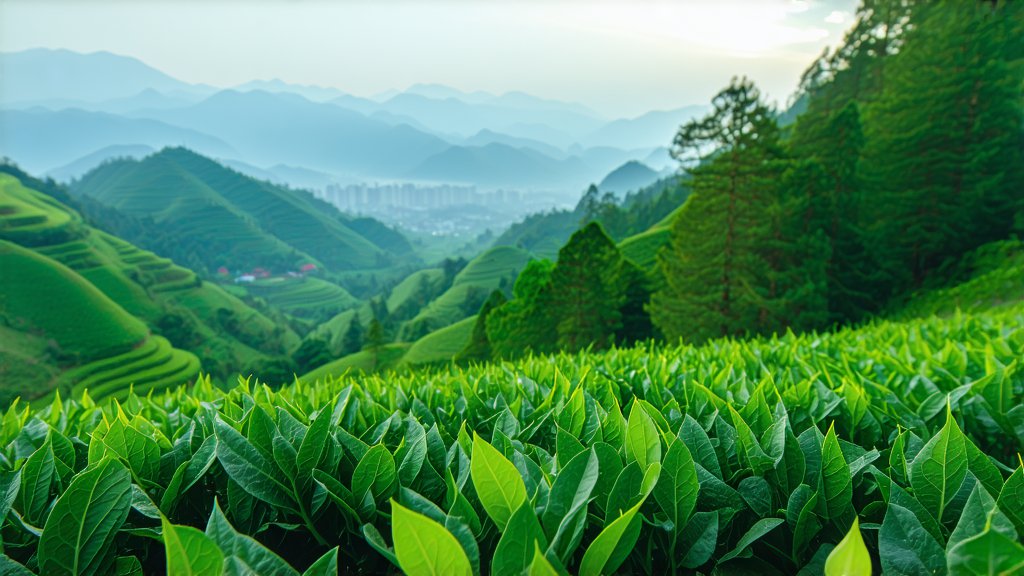
Longjing tea, also known as West Lake Dragon Well, is a quintessential representation of China's rich tea culture and its unparalleled expertise in the art of tea cultivation and processing. Originating from the picturesque West Lake region in Hangzhou, Zhejiang Province, this exquisite green tea has captivated tea enthusiasts worldwide for centuries with its unique flavor profile, aromatic qualities, and health benefits. In this article, we delve deep into the history, varieties, meticulous production process, and the art of appreciating Longjing tea, offering an insightful journey into one of China's most revered tea treasures.
Historical Roots and Evolution
The history of Longjing tea traces back to the Tang Dynasty (618-907 AD), but it truly gained prominence during the Qing Dynasty (1644-1912). Legend has it that an imperial decree from the Qianlong Emperor in the 18th century led to the naming of this tea after the dragon well located near the West Lake. Over time, Longjing evolved into a symbol of Chinese tea culture, representing not just a beverage but also an embodiment of harmony between nature and human craftsmanship.
Varieties of Longjing Tea
Longjing tea comes in several distinct grades, each characterized by its pick time, leaf size, and overall quality. The highest grade, 'Xincha' or pre-Qingming tea, is harvested before the Qingming Festival (Tomb Sweeping Day), when the first buds and leaves are tender and rich in nutrients. This early harvest ensures the freshest taste and finest texture. As the season progresses, later pickings yield 'Yumingqian' (post-Qingming) and 'Lixiangqian' (post-Lichun, another traditional festival), which still maintain excellent quality but exhibit slightly different flavors and appearances.
The Art of Longjing Production
The production of Longjing tea is a testament to the intricate balance between tradition and precision. It involves several meticulous steps:
-
Plucking: Only the top one bud and the first two leaves are handpicked, ensuring the selection of the youngest, most tender parts of the plant.
-
Spreading and Withering: The freshly plucked leaves are spread out on bamboo mats to allow for natural withering under the sun, reducing moisture content and softening the leaves for further processing.
-
Pan-Frying: This step is crucial in shaping Longjing's distinctive flat appearance and enhancing its flavor. The leaves undergo high-temperature pan-frying in woks, where skilled artisans toss them continuously to prevent burning while simultaneously removing excess moisture and fixing the green color.
-
Shaping and Drying: After initial frying, the leaves are shaped by hand or machine to achieve their characteristic flat shape. They are then subjected to a second round of pan-frying to further dry and refine their flavor.
-
Sorting and Grading: Finally, the tea is sorted based on size, shape, and quality, ensuring that only the finest leaves make it into premium Longjing packages.
Appreciating Longjing Tea: A Ceremonial Experience
Drinking Longjing tea is not merely a consumption act; it's a ritualistic experience steeped in tradition. Here’s how to fully appreciate its nuances:
-
Warm the Tea Set: Begin by rinsing your teapot and cups with hot water to warm them up and enhance the tea's aroma.
-
Measure and Infuse: Take approximately 3-5 grams of Longjing tea per 150ml of water. Use water heated to around 80°C (176°F) to preserve the delicate flavors. Steep for about 1-2 minutes for the first brew.
-
Observe the Dance: Watch as the flat leaves unfurl gracefully in the water, resembling a dance of emerald dragons in the cup.
-
Sip and Savor: Take slow sips, allowing the tea to coat your palate fully. Notice the initial sweetness followed by a subtle vegetal note and a lingering umami finish.
-
Multiple Infusions: Longjing can be steeped multiple times, each infusion revealing different layers of flavor and complexity.
In conclusion, Longjing tea stands as a shining example of China's profound tea heritage, combining centuries-old traditions with meticulous craftsmanship. Its allure lies not only in its refreshing taste but also in the cultural significance it embodies. For those seeking a true taste of Chinese green tea excellence, Longjing offers an unforgettable journey through its history, varieties, production artistry, and the meditative practice of its appreciation. Embrace this green elixir, and let it transport you to the tranquil shores of West Lake, where nature's bounty meets human ingenuity in perfect harmony.